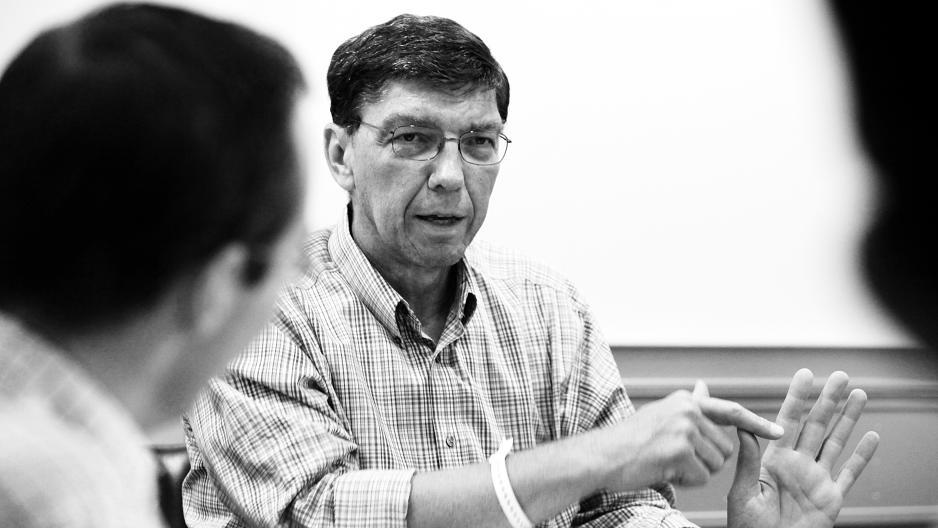Clay Christensen’s New Theory Of Innovation Has Everything To Do With Hiring
Business schools spend a great deal of time teaching would-be entrepreneurs and managers about the differences between features and benefits and their importance. Differentiate your product by tinkering with it to make it better or cheaper. Get to know your customer so you can understand how to sell to them.
Not exactly, says Harvard Business School professor and innovation expert Clayton M. Christensen. In his new book, Competing Against Luck: The Story of Innovation and Customer Choice, he and coauthors Karen Dillon, Taddy Hall, and David S. Duncan says that customers don’t buy products and services as such. Instead, they’re hiring them to do a job.
At first, that may seem like a very “insider baseball” distinction. Don’t you have to get to know your customer to understand their needs? Yes and no, Christensen says.
Product Or Service For Hire
Let’s say you have a customer who has a busy and stressful week at work. On Monday, after she walks through the door at 7 p.m., she exercises. On Tuesday, she pulls out a bottle of Jack Daniels and pours herself a drink. On Wednesday, she reads the Bible, and on Thursday, she uses her Xbox. If you’re trying to look at the customer’s attributes and connect the dots between these disparate activities and her overall behavior, it’s confusing. But when you realize that she’s “hiring” these various products to help her unwind, the picture becomes clearer, he explains.
“That’s why you need to understand the situations that your customer finds themselves in,” says Christensen. That’s when they have a “job” and are more likely to buy your product, he says.
Companies that have embraced this model are able to innovate in ways that make it tough to compete. Christensen points to Airbnb as an example. The sleeping-space-for-hire company understands that customers may want to hire a hotel to do a number of jobs: to provide a room with a bed, present a suitable location for a meeting with an important client, or network with other people who are staying there. However, Airbnb is focused on providing a place where people can have a home base to sleep and not be bothered.
“When Airbnb emerged, they were focused on just one of these jobs, and they nailed it,” he says.
The Benefits Of A Job Well Done
Such spot-on job performance has its benefits, the authors contend. When you have a deep understanding of the job, you can innovate more specifically to do it well. Rather than broadly guessing at what the customer might want, you can focus on innovation that addresses specific experiences they wish to have and deliver in a more focused manner. When you do that, you enjoy high levels of customer loyalty and repeat business and may even be able to command a premium price.
This offers a competitive advantage to any company that is willing to understand the job rather than the customer. For example, Amazon has turned shopping at disparate locations into a singular, streamlined experience where you can get a staggering number of products in one location and pay for them with one click. That deep understanding came from asking the right questions about the job to be done, Christensen says.
“Just in the shopping experience, if all they do is measure, ‘Did we ship it to you on time?’ That’s a very different experience,” he explains. Amazon took it a step further by asking, Christensen adds: “‘Did you receive it on time? What was it like to pay for the product, and how hard was it to find the product? What might I buy if I don’t buy this? What else could I buy to get the same job done?'” Failure to do so could mean that businesses get better at the wrong things.
Disruption, Redux
This isn’t the first time Christensen has brought fresh thinking to the innovation arena. He coined the term “disruptive innovation” in 1995. It “describes a process by which a product or service takes root initially in simple applications at the bottom of a market and then relentlessly moves upmarket, eventually displacing established competitors.” He addressed the topic again in his 2011 best seller The Innovator’s Dilemma: The Revolutionary Book That Will Change the Way You Do Business, and described successes and failures of companies like Intel, HP, and Honda in staying on top of their game.
Christensen, who is a member of the Church of Jesus Christ of Latter-Day Saints and open about his faith, says a practice in the Mormon church was part of the inspiration for his thinking about innovation, especially “jobs for hire.”
He describes Mormon services delivered by fellow church members who talk about their own experiences. During the week, members have assignments to help each other. While many people feel the desire to help others but don’t know how to do so other than writing a check, Christensen has had to dive in to understand how people need help—in essence, the job that they needed to hire someone to help with, he says. The church’s role is to provide that help in a way that strengthens peoples’ faith.
“I have responsibility for several other families in our congregation,” explains Christensen, “and my job is to be sure that if there are things going on that the rest of us can help with, we help them.”
So if there is a measure of divine inspiration in Christensen’s latest book, perhaps it’s the fact that we all have fundamental jobs we need done and are looking for the best product or service to fill them. Being the best answer/hire for that job ensures loyalty, whether you’re providing retail goods, a place to sleep, or connection to a higher power.
Fast Company , Read Full Story
(37)



